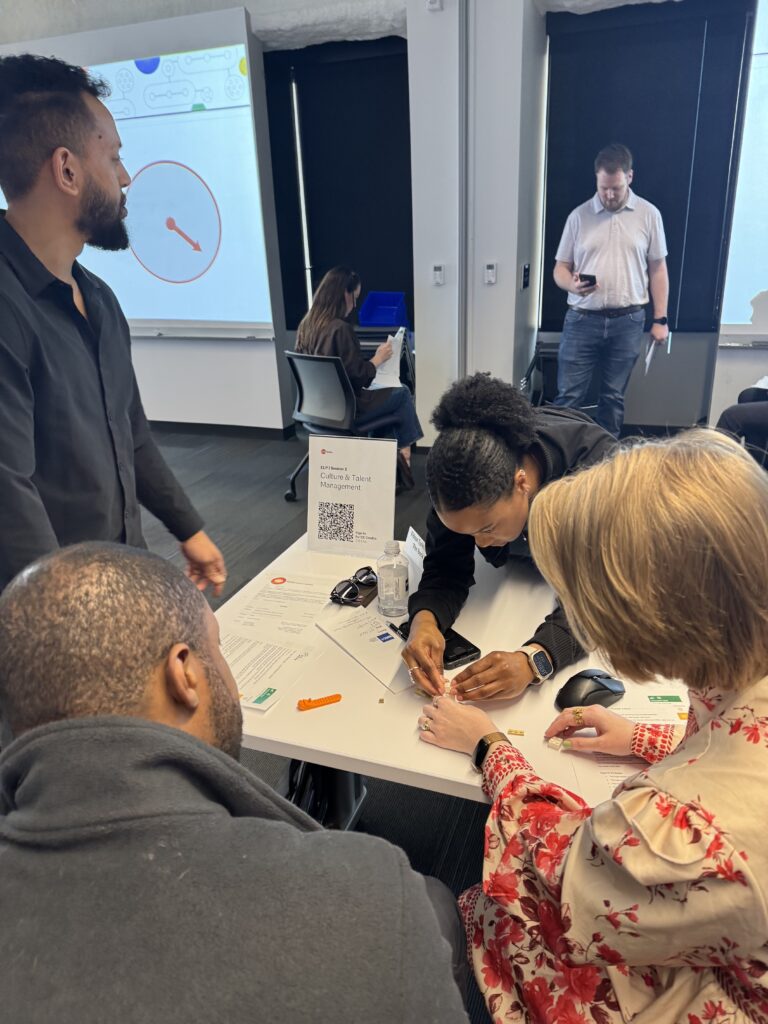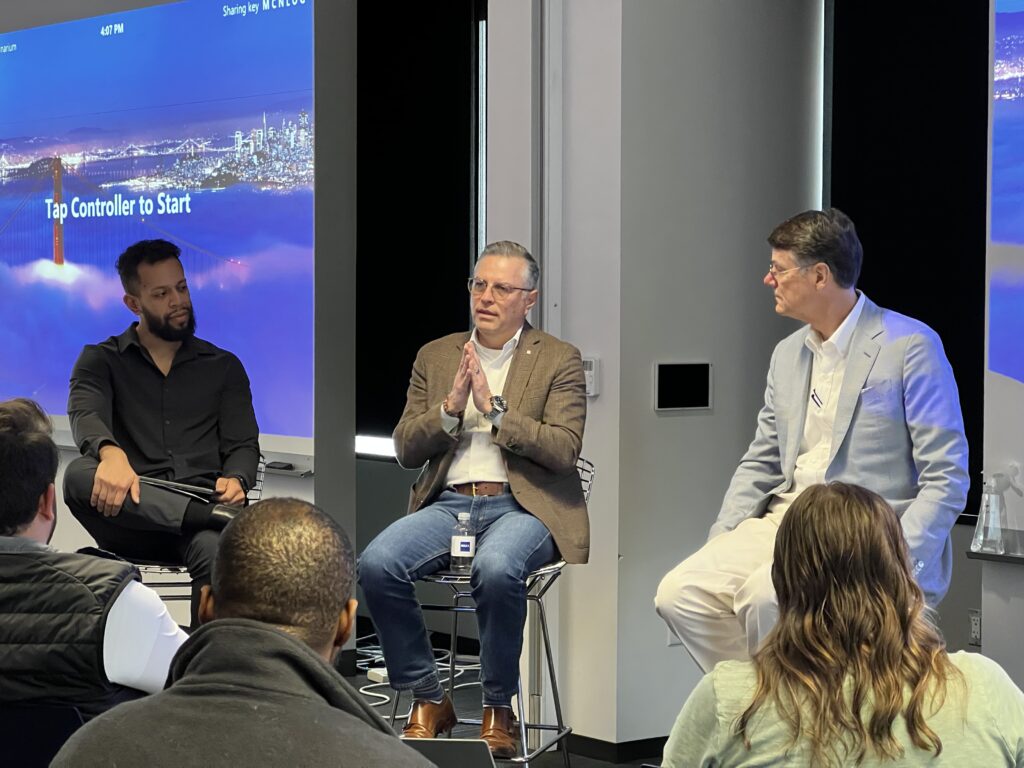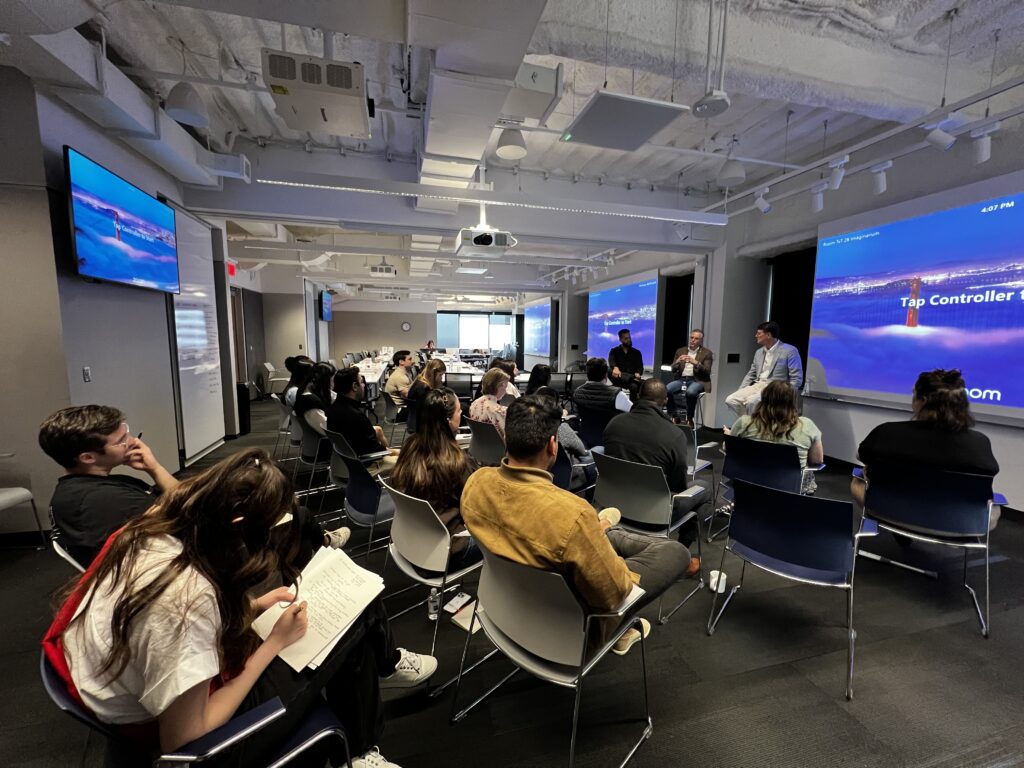AIA Emerging Leadership Program Session 2 with Suzanne Smith, MBA and guests Alejandro Hernandez, AIA, SAME, NCARB, LEED AP BD+C and Michael Malone, FAIA, NCARB
The second session of the 2025 Emerging Leaders Program centered around Culture and Talent Management, with discussions on drivers of culture in the workplace, the spoken vs. unspoken principles of a company, and goals to define for ourselves what we value in our working environment. This session was a deep dive into how culture functions as an energy force within an organization – shaping decisions, behaviors, and the overall feel when you walk into a place. Culture, while often intangible, is a defining force that influences every aspect of the workplace.
“Culture Eats Strategy for Breakfast.”
– Peter Drucker
Visible vs Invisible Culture Culture isn’t solely defined by the values you post on the wall, the dress code, or office space set up – while all examples of visible culture, these are only one part of the equation. Invisible culture, what you can sense when you walk into a space, is what truly shapes behavior. What’s unspoken can often have a greater influence than what is explicitly stated. Invisible culture governs things like decision making, how challenges are addressed, and what happens when mistakes are made. Do employees feel empowered to take risks, or is there a constant fear of failure? Are decisions made based on collaboration, or does power reside with a select few? Are the values written on the wall being lived and rewarded in practice? These are the elements of culture that guide the day-to-day experience of working in an organization.
Generational Shifts One of the biggest challenges organizations face today is the generational shift in the workforce. As younger employees enter the workforce, they bring with them new expectations around flexibility, work-life balance, and workplace inclusivity. This generational gap can be particularly pronounced in businesses where senior leadership has a more hierarchical, top-down management style while younger workers are often seeking more entrepreneurial environments where collaboration and innovation are prioritized over rigid structures. How these generational differences are navigated will be a defining factor for the future of many companies.
Types of Culture Culture isn’t one-size-fits-all. Different types of cultures appeal to different people and organizations. Some companies operate like a family or clan, prioritizing close relationships and a supportive, tight-knit environment. Others, like many traditional corporations, lean toward hierarchy, with clear chains of command and a structured approach to decision-making. Entrepreneurial cultures, on the other hand, are flexible, fast-paced, and driven by innovation. Finally, market-oriented cultures are results-driven, focused on competition, and striving to outperform others.
Regardless of the type, culture is a defining force in today’s business world. And it’s not just about top-down leadership — culture is something that must be cultivated across all levels, from leadership to team dynamics. It’s important to recognize that culture isn’t static; it needs to be nurtured from the top down but also spread horizontally among peers.
Core Goals
- Define for Yourself – the more clarity you have on your own values, the more authentic you’ll be in your work and interactions with others.
- Be Consistent – a person lives by their word; staying true to your word will create a foundation for strong relationships and credibility.
- Rinse and Repeat: Ethics as a Skill – you must work to hone your ethical character
- Be an Upstander in Community – lead by setting an example of good ethical conduct and problem solving skills.



Participants working to solve a group puzzle during a team building exercise.
“Leadership is the art of making people believe in your potential.”
– Suzanne Smith
Leadership Effective leadership goes beyond just giving directions. It’s about inspiring belief, building trust, and guiding people to realize their own potential while aligning their goals with the organization’s mission. This requires the ability to adapt to the situation, individual, task, or context and respond to what the team needs in the moment – known as “situational leadership.” Whether it’s being a supportive coach, a decisive problem solver, or a visionary strategist, situational leadership requires flexibility and a deep understanding of people.
Freedom to engage begins with psychological safety, which is crucial to our physical safety. Psychological safety is important in a working environment, and good leaders need to foster that in their individuals and teams, utilizing collaboration, encouraging curiosity, and showing compassion. In order to fully engage, people need:
- a reason to engage – meaningfulness in the work or goals
- the capacity to engage – availability and capability to put in the time
- the freedom to engage – that sense of psychological safety in the workplace and within the team
Culture in Practice Following the presentation and group activity, a Q&A panel with guest speakers Alejandro Hernandez and Michael Malone gave participants the opportunity to hear from the Design Principles on two firms of varying size and office culture. The panelists shared insight into the types of office environments they have cultivated throughout their years in the industry, and the importance of finding a firm that aligns with your personal style and goals. They gave comparisons of how work is done differently between the two firms they represent and what unique opportunities different types of offices could provide. For example, an individual who can take on varied responsibilities and adapt quickly might flourish at a small firm where employees are expected to fill multiple roles. A larger firm with more team members and resources might be more beneficial to an individual looking to hone in on specific skills or become a subject matter expert. Both Alejandro and Michael brought valuable perspective and an enthusiasm for architecture, making for a meaningful close out to session 2.


MC Thomas Castro and Q&A Panelists Alejandro Hernandez and Michael Malone.
Final Thoughts Culture is a powerful energy force that drives the way people work, collaborate, and succeed. It’s something that transcends both large and small firms, whether through the informal, familial atmosphere of a smaller firm or the adaptive, transparent culture of a larger organization. As leaders, it’s critical to foster an environment where values are lived, not just spoken, and where people are empowered to lead in the ways they are needed.
Whether part of a global company or a small studio, the principles of effective culture are universal. By defining your values, being consistent in your actions, and adapting your leadership style to the needs of the moment, you can create a workplace where culture isn’t just a buzzword — it’s a transformative force
Session 2 Coordinators: Maddie Bennett, Thomas Castro, Edith Gomez, Francisco Ibarra, and Natalie Madden
